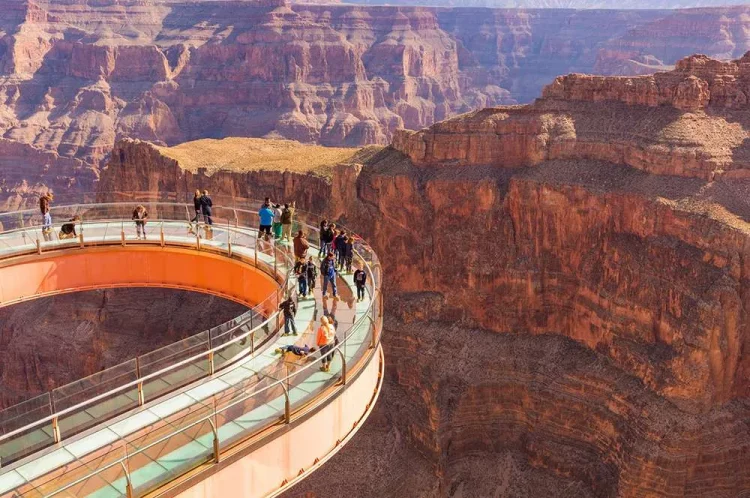Introduction
Grand Canyon National Park, one of the world’s most iconic natural landmarks, is a bucket-list destination for millions of travelers. Spanning over 1.2 million acres, it offers a staggering array of activities, views, and experiences that cater to all types of adventurers, from casual sightseers to hardcore hikers. However, its vast size and unique environment mean that thoughtful preparation is essential to make the most of your trip.
This comprehensive guide provides detailed travel tips to ensure your visit is safe, enjoyable, and memorable. From planning your itinerary to understanding the best times to visit and preparing for the park’s unique challenges, we cover everything you need to know.
1. When to Visit: The Best Time to Explore the Grand Canyon
1.1 Seasons and Weather
- Spring (March-May): Mild temperatures and blooming wildflowers make spring a popular time for visiting. Crowds are moderate.
- Summer (June-August): The busiest season, with warm temperatures on the South Rim but extreme heat in the canyon. Early reservations and careful planning are necessary.
- Autumn (September-November): Cooler weather and fewer crowds make fall ideal for hiking and photography.
- Winter (December-February): While the North Rim closes, the South Rim remains accessible. Snow adds a magical touch, but some trails may be icy.
1.2 Best Times of Day to Visit
- Sunrise and Sunset: These are the best times to enjoy breathtaking views, avoid crowds, and take stunning photographs.
- Midday: Ideal for exploring visitor centers and museums when trails are busier.
2. How to Get There: Transportation and Accessibility
2.1 By Air
- The nearest major airport is Phoenix Sky Harbor International Airport (4 hours by car). Flagstaff Pulliam Airport is closer but has limited flights.
2.2 By Car
- Most visitors drive to the park. The South Rim is accessible via Highway 64, while the North Rim is reached via Highway 67.
- Ensure your vehicle is in good condition, especially if you’re visiting during winter or planning to drive through remote areas.
2.3 Shuttle Services and Public Transportation
- Free shuttle buses operate within the South Rim, reducing traffic congestion and offering convenient transportation to major viewpoints and trailheads.
3. Choosing the Right Rim: South Rim vs. North Rim vs. West Rim
3.1 South Rim
- Highlights: Iconic viewpoints, extensive facilities, and year-round accessibility.
- Who It’s For: First-time visitors, families, and those looking for a classic Grand Canyon experience.
3.2 North Rim
- Highlights: Remote and less crowded, with lush vegetation and cooler temperatures.
- Who It’s For: Adventurous travelers and those seeking solitude.
3.3 West Rim
- Highlights: Home to the Grand Canyon Skywalk and closer to Las Vegas.
- Who It’s For: Day-trippers and thrill-seekers.
4. Accommodation Options: Where to Stay
4.1 Inside the Park
- Lodges: El Tovar Hotel and Bright Angel Lodge offer historic charm and proximity to major attractions.
- Campgrounds: Mather Campground and Desert View Campground are ideal for those seeking an outdoor experience.
4.2 Outside the Park
- Tusayan: Just outside the South Rim entrance, it offers hotels, restaurants, and a visitor-friendly atmosphere.
- Williams and Flagstaff: Affordable options with easy access to the South Rim via Highway 64.

5. Packing Essentials for Your Trip
5.1 Clothing
- Layered Clothing: Temperatures vary greatly between the rim and canyon floor.
- Sturdy Hiking Boots: Essential for exploring trails.
- Hat and Sunglasses: Protect against the sun.
5.2 Gear
- Water Bottles and Hydration Systems: Staying hydrated is crucial, especially during hikes.
- Backpack: For carrying snacks, maps, and first aid supplies.
- Trail Maps and Guidebooks: Navigation tools are vital for off-the-beaten-path adventures.
5.3 Other Essentials
- Sunscreen and lip balm.
- Snacks and energy bars.
- Flashlight or headlamp.
6. Exploring the Park: Must-See Attractions and Activities
6.1 Iconic Viewpoints
- Mather Point: A popular sunrise spot.
- Desert View: Offers a unique perspective with the historic Watchtower.
- Yaki Point: A quieter option with stunning views.
6.2 Hiking Trails
- Bright Angel Trail: A well-maintained trail suitable for beginners.
- South Kaibab Trail: Steeper and more challenging, but offers spectacular views.
- Rim Trail: Easy and accessible, perfect for leisurely walks.
6.3 Rafting Adventures
- Colorado River rafting offers an adrenaline-filled way to explore the canyon’s depths.
7. Staying Safe: Tips for a Risk-Free Visit
7.1 Hydration and Nutrition
- Always carry plenty of water, especially on hikes.
- Eat regularly to maintain energy levels.
7.2 Wildlife Awareness
- Observe animals from a distance and never feed them.
- Be cautious of squirrels, which can carry diseases.
7.3 Trail Safety
- Wear appropriate footwear and stay on marked trails.
- Avoid hiking during the hottest part of the day.
7.4 Weather Preparedness
- Be aware of sudden changes in weather, especially during monsoon season.
8. Enhancing Your Experience: Guided Tours and Special Programs
8.1 Ranger-Led Programs
- Participate in educational talks, guided hikes, and stargazing sessions.
8.2 Helicopter Tours
- Enjoy a bird’s-eye view of the canyon’s vastness.
8.3 Photography Workshops
- Capture the beauty of the Grand Canyon under the guidance of experts.
9. Budgeting for Your Trip
9.1 Entrance Fees
- A 7-day vehicle pass costs $35, while annual passes are $70.
9.2 Dining Costs
- Meals inside the park are pricier than outside, so plan accordingly.
9.3 Souvenirs and Activities
- Budget for mementos and optional activities like guided tours or rafting.
10. Leaving No Trace: Responsible Tourism
10.1 Pack Out Trash
- Dispose of waste responsibly and recycle where possible.
10.2 Respect Wildlife
- Maintain a safe distance and avoid disrupting their habitat.
10.3 Stay on Trails
- Protect the park’s fragile ecosystems by sticking to designated paths.
Conclusion
A visit to Grand Canyon National Park is a transformative experience, offering awe-inspiring views, thrilling adventures, and a deep connection to nature. By following these travel tips, you can ensure your trip is safe, enjoyable, and memorable while contributing to the preservation of this iconic destination for future generations.
Whether it’s your first visit or a return journey, the Grand Canyon never fails to captivate, making every trip an adventure of a lifetime.





















